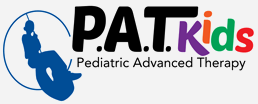How do you know if OT can help your child?
Our Occupational Therapy Screening Tool is a great way to determine if pediatric occupational therapy (OT) is right for your child and can help him/her meet life’s challenges. Your child may benefit from occupational therapy intervention if he/she has experienced or is experiencing any of the issues below. Below are some of the key areas we specialize in. Call today to discuss how we can address the specific needs of your child.
- Avoids touching or being touched (especially if unexpected), dislikes getting dirty, seems unaware of pain, and/or displays upset with daily routine tasks such as dressing, bathing, washing hair, cutting nails, etc.
- Seems clumsy or uncoordinated (taking longer than expected to learn motor skills, bumps into other people or objects in the environment, falls often, etc.)
- Poor eye contact or difficulty interacting with adults/peers
- Covers ears, becomes upset, or complains about loud noises
- Difficulty following verbal directions or completing steps of daily routines
- Limited diet (does not eat certain food textures or temperatures, gags on food, etc.)
- Avoid movement activities such as swings, slides, hesitates on curbs or uneven surfaces, etc.
- Appears to be in constant motion, fidgety, difficult time sitting still
- Overly rough when playing
- Difficulty imitating actions
- Unsafe in community or at home
- Disruptive behaviors-impulsive, limited attention, resistive to new activities/changes in routine, difficulty moving from one activity to another, gives up easily, difficulty calming self
Call us today at 704-799-6824 or request an appointment for an occupational therapy evaluation for your child.
Welcoming PlaceWith Quality Care
Our philosophy is learning through play as we offer a stimulating environment for children. Our philosophy is learning through play as we offer.
- Friendly Place
- Online Access
- Varied Classes
- Full Day Sessions


0
Total Groups
0
Qualified Teachers
0
Years of Experience
0
Students Enrolled
ToeWalking
Toe walking is a common condition that can be easily observed by parents or pediatricians. It is important to recognize that toe walking is not a condition that children are likely to “grow out of”. It is recommended that families seek physical therapy intervention as soon as chronic toe walking is observed. Fortunately, our physical therapy department is highly experienced with kids that walk on their toes and have had great success working with those children to walk normally.
Frequently Asked Questions About Toe Walking
- What happens if we don’t correct toe walking? Toe walking results in a cascade of worsening impairments including poor trunk strength, balance deficits, contractures, lower extremity weakness, boney stress, midfoot collapse, ankle instability, and further gross motor delay.
- Why do children walk on their toes if it doesn’t feel good? Children use what they know, over and over again. New walkers take 2,300 steps/hour, travel 7 football fields/hour and fall 17 times/hour. Children will develop inefficient motor plans that form the foundation of their movement. They don’t know any different!
- Can toe walking be a sign of other developmental issues? Yes. Toe walking can be an early indication of other developmental issues such as sensory impairment, tactile defensiveness, musculoskeletal impairment, core and hip weakness and others. Your therapist will be able to evaluate your child and determine if there are other potential issues to address.
- Is it important to treat this issue quickly? Absolutely. Toe walking should be addressed as soon as it is observed. Bone grows and remodels in response to the forces that are applied on it. Therefore, abnormal forces from toe walking can lead to abnormal bone modeling and bone development. In addition, the sooner it is addressed, the easier it will be to correct, before those habits are more ingrained.
- How does PAT treat toe walking? There are many different paths to correcting toe walking depending on the severity and presence of other issues. These include stretching, bracing or wedging for improved alignment, night splints, core, hip, lower leg and foot strengthening, balance training, gait training and sensory input to the foot. PAT will also provide integrated home programs to encourage work at home. Repetition is the key to motor learning.
